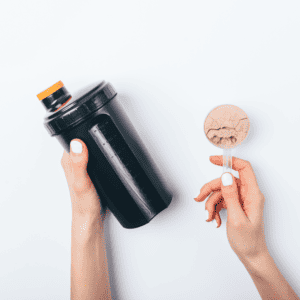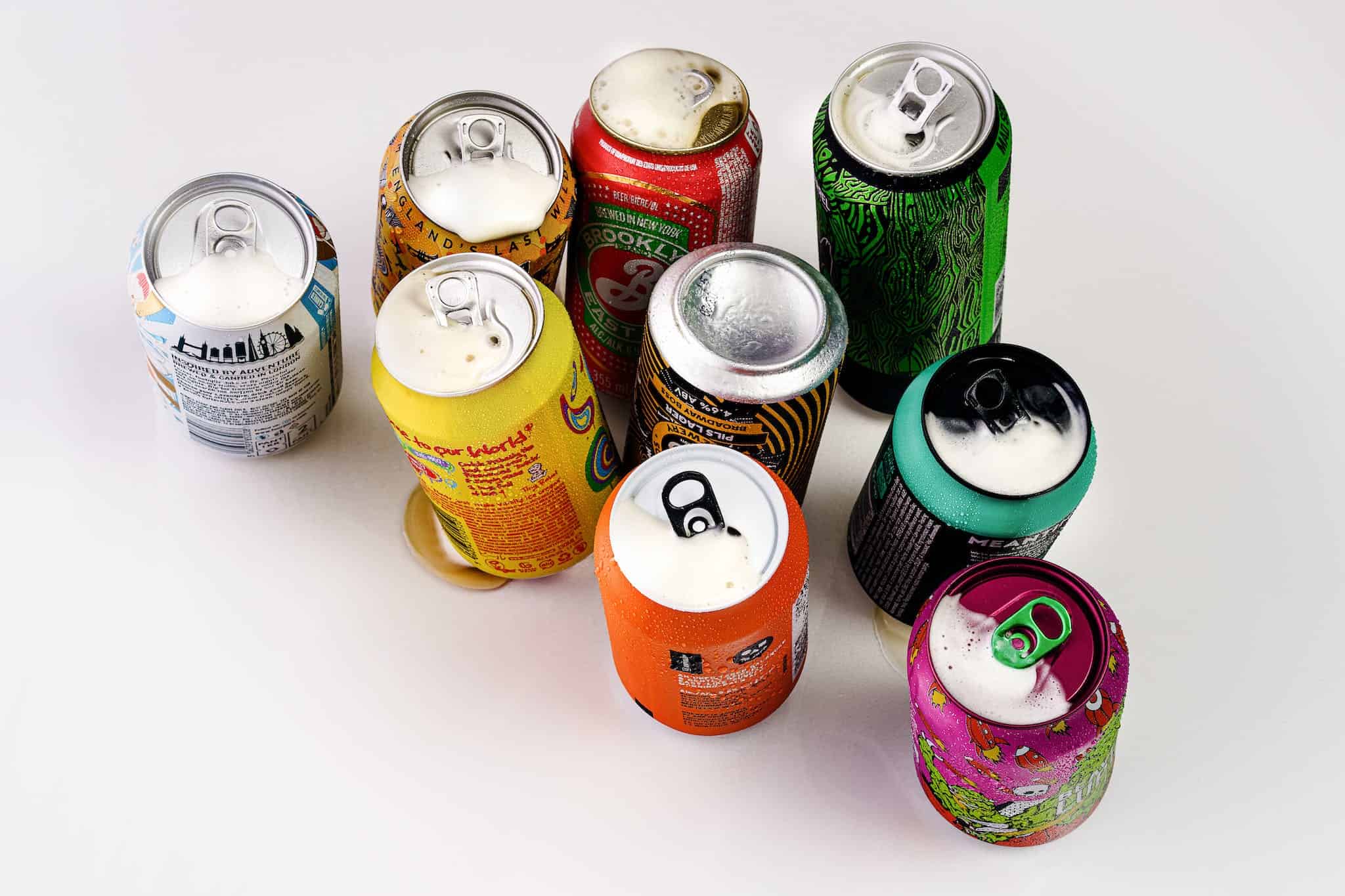Protein Supplements: Top Recommendations from a Registered Dietitian
Have you ever been curious about protein supplements? Have you ever wondered if you need a protein supplement? You may already know the benefits of protein, but are you getting enough?

Let’s talk about it. Protein is a macronutrient composed of smaller units called amino acids. There are 20 different amino acids that combine to create a larger chain. Each amino acid has its own distinct characteristics, which allows for diversity among proteins.
Protein holds various important roles in our body, such as:
- Supporting the growth and integrity of tissues
- Maintaining the appropriate acid-base balance in our bodies
- Producing antibodies that aid in fighting an infection
- Serving as a peptide hormone that maintains energy homeostasis
Calculating Protein Needs
Protein needs will vary based on activity level, weight, and health needs. I recommend you consume between 1.0-2.0 grams of protein per kilogram of body weight. This is equivalent to 0.45-0.90 grams of per pound of body weight.
Follow these guidelines to ensure you have an adequate amount that supports your overall health.
Types of Protein
The market offers a wide range of options, each having a distinct effect on the body. A few of the options available are:
- Whey protein: This comes from the liquid that is separated during the cheesemaking process. The dairy-based protein is widely used by athletes due to its rich content of branched chain amino acids (BCAAs). The BCAAs facilitate fast absorption and promote muscle synthesis.
- Casein protein: It comes exclusively from milk and is known for its slow digestion rate in the body. This allows for improved recovery and contributes to a greater sense of satiety.
- Soy Protein: A plant based protein option derived from soybeans. It provides all of the nine essential amino acids required by the body. I recommend only consuming organic, non-GMO soy products.
- Pea Protein: Plant based protein extracted from yellow peas. It is known for its easy digestible, hypoallergenic properties, and complete amino acid profile.
What to avoid in protein powders
Contaminants like plastics and heavy metals
While protein powder offers numerous health benefits, some protein powders may have contaminants.
The Clean Label Project conducted a study examining the contaminants in 134 of the best-selling protein powders. The results revealed a significant amount of heavy metals, including lead, cadmium, and arsenic as well as a plastic compound Bisphenol A (BPA) found in many powders. Specifically, the study found that 55% of the products tested contained elevated levels of BPA, a plastic compound known to cause cancerous tumors and developmental disorders. The study also concluded that 70% of protein powders tested were contaminated with lead, and 74% were contaminated with cadmium.
It is recommend to carefully select your protein powder and ensure that it is free of potentially harmful contaminants.
Artificial Sweeteners and Food Dyes
I recommend avoiding protein supplements with artificial sweeteners such as aspartame, sucralose, and acesulfame potassium. These are linked to a variety of health issues including cravings, blood sugar imbalances, inflammation, and gut health issues. For more information on types of added sugar, check out my blog: The Truth About Sweeteners.
Also, be mindful of food dyes commonly found in protein supplements. These are linked to increased inflammation and are known to be cancer-causing.
Dietitian Recommended Protein Supplements


References:
- Boirie, Y., Dangin, M., Gachon, P., Vasson, M. P., Maubois, J. L., & Beaufrère, B. (1997). Slow and fast dietary proteins differently modulate postprandial protein accretion. Proceedings of the National Academy of Sciences of the United States of America, 94(26), 14930–14935. https://doi.org/10.1073/pnas.94.26.14930
- https://cleanlabelproject.org/the-best-worst-protein-powder-products/
- Gorissen, S. H. M., Crombag, J. J. R., Senden, J. M. G., Waterval, W. A. H., Bierau, J., Verdijk, L. B., & van Loon, L. J. C. (2018). Protein content and amino acid composition of commercially available plant-based protein isolates. Amino acids, 50(12), 1685–1695. https://doi.org/10.1007/s00726-018-2640-5
- Hamm, L. L., Nakhoul, N., & Hering-Smith, K. S. (2015). Acid-Base Homeostasis. Clinical journal of the American Society of Nephrology : CJASN, 10(12), 2232–2242. https://doi.org/10.2215/CJN.07400715
- Kudełka, W., Kowalska, M., & Popis, M. (2021). Quality of Soybean Products in Terms of Essential Amino Acids Composition. Molecules (Basel, Switzerland), 26(16), 5071. https://doi.org/10.3390/molecules26165071
- Li, P., Yin, Y. L., Li, D., Kim, S. W., & Wu, G. (2007). Amino acids and immune function. The British journal of nutrition, 98(2), 237–252. https://doi.org/10.1017/S000711450769936X
- Nussey, S.. Whitehead S. Endocrinology: An Integrated Approach. Oxford: BIOS Scientific Publishers; 2001. Chapter 1, Principles of endocrinology. https://www.ncbi.nlm.nih.gov/books/NBK20/
- Overduin, J., Guérin-Deremaux, L., Wils, D., & Lambers, T. T. (2015). NUTRALYS(®) characterization of in vitro gastric digestion and in vivo gastrointestinal peptide responses relevant to satiety. Food & nutrition research, 59, 25622. https://doi.org/10.3402/fnr.v59.25622
- Waskiw-Ford, M., Hannaian, S., Duncan, J., Kato, H., Abou Sawan, S., Locke, M., Kumbhare, D., & Moore, D. (2020). Leucine-Enriched Essential Amino Acids Improve Recovery from Post-Exercise Muscle Damage Independent of Increases in Integrated Myofibrillar Protein Synthesis in Young Men. Nutrients, 12(4), 1061. https://doi.org/10.3390/nu12041061
- Zheng, X., Shi, X., & Wang, B. (2021). A Review on the General Cheese Processing Technology, Flavor Biochemical Pathways and the Influence of Yeasts in Cheese. Frontiers in microbiology, 12, 703284. https://doi.org/10.3389/fmicb.2021.70328






